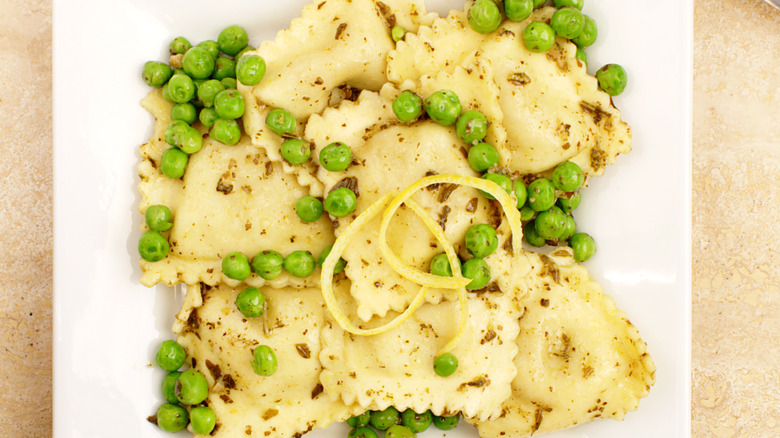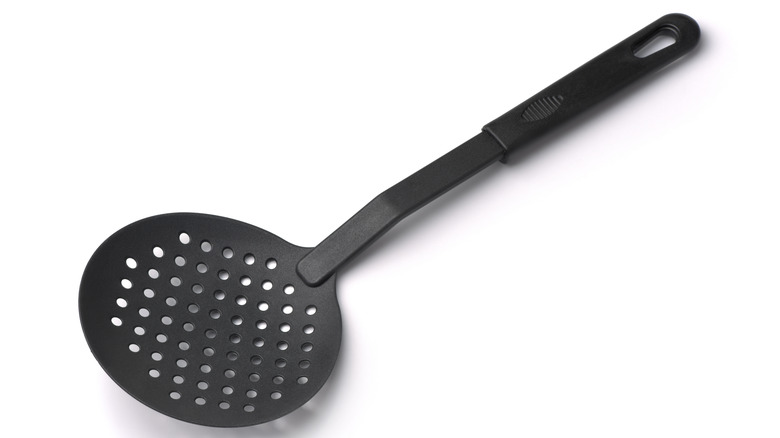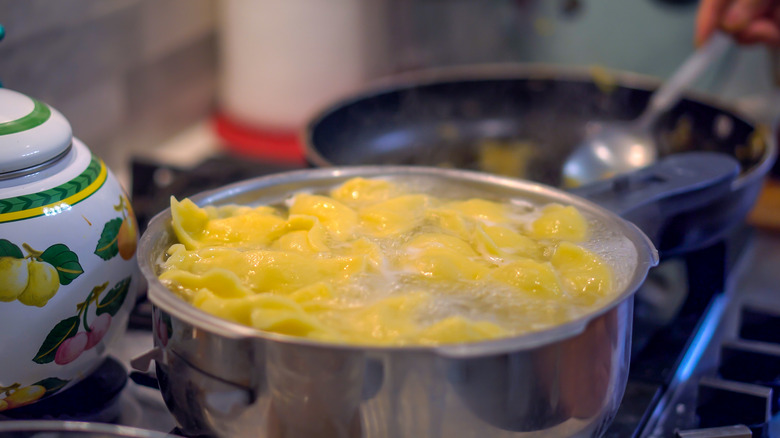Do Yourself A Favor And Stop Dumping Your Ravioli In A Colander
You have the ravioli-cooking process down to a science by now. You boil it in some salted water, wait until it's al dente, and then stick it in a colander and slosh it around until all the water has drained out before bathing the pasta in a savory sauce. But what if there's a better way to drain your ravioli?
While using a colander to drain pasta works well for most pasta types, it may not be the best fit for ravioli. Ravioli in particular might need a gentler draining method so that it stays intact instead of breaking apart. But if you're accustomed to relying on a colander to drain ravioli, what can you use to drain it that will get all of the water out while keeping all of the fillings in? All you'll need to do is swap out your colander for another piece of kitchen equipment that's better suited to handle more delicate types of pasta. It's an easy switch-up, and it'll leave your ravioli looking neater and tasting even better.
How to drain ravioli without a colander
Why single ravioli out for a specific draining process? Unlike pasta with just one layer, its double layers can only hold together so well, so when you put it in a colander and shake it to get out all of that extra water, some of the ravioli pieces might break open, leaking their filling before you can eat it inside the pasta.
If you prefer eating ravioli that can stay in one piece, ditch the colander temporarily. (Don't worry, your colander is fine to use on most pasta types without a central filling.) Instead of grabbing a colander the next time you need to drain ravioli, pick up a slotted spoon or spider strainer instead. These kitchen tools are better equipped to drain ravioli because you don't need to move the pasta around too extensively, which would cause it to break. Both are small enough that you can take a few pieces of ravioli, drain them easily, and then add them to a pot of sauce or plate them to serve. Yes, it might take slightly more time to drain your ravioli with a strainer than it would if you use a colander, but you'll no longer encounter those broken ravioli pieces and feel disappointed that your dinner has been destroyed before you can eat a single bite.
Other tips for preventing ravioli from breaking
Broken ravioli is one of those kitchen annoyances that can make an otherwise nice ravioli dinner a real bummer, but thankfully, there's more than one way to keep ravioli from breaking. When it comes to keeping ravioli intact, how you cook it is just as important as how you drain it.
When you cook ravioli, be especially mindful of the heat settings on your stove. Make sure that you bring the water to a boil as per usual, but once you add the ravioli to the pot, turn the water down to a simmer. While it's important to have the water be hot enough to cook your pasta, the force that comes from those big, boiling "water bubbles" is strong enough to tear apart the delicate layers in ravioli.
Also, it's important to stir ravioli so that it doesn't stick to the pan, but instead of stirring absentmindedly, like you might do with other types of pasta, be gentle as you scrape the ravioli off the sides and the bottom of the pan. Make sure that as you stir the pasta, you don't puncture the middle portion with the filling or disconnect the sides of the pasta. If you want your ravioli to stop breaking, use a slotted spoon instead of your colander, but be sure to take precautions as you cook it too.


